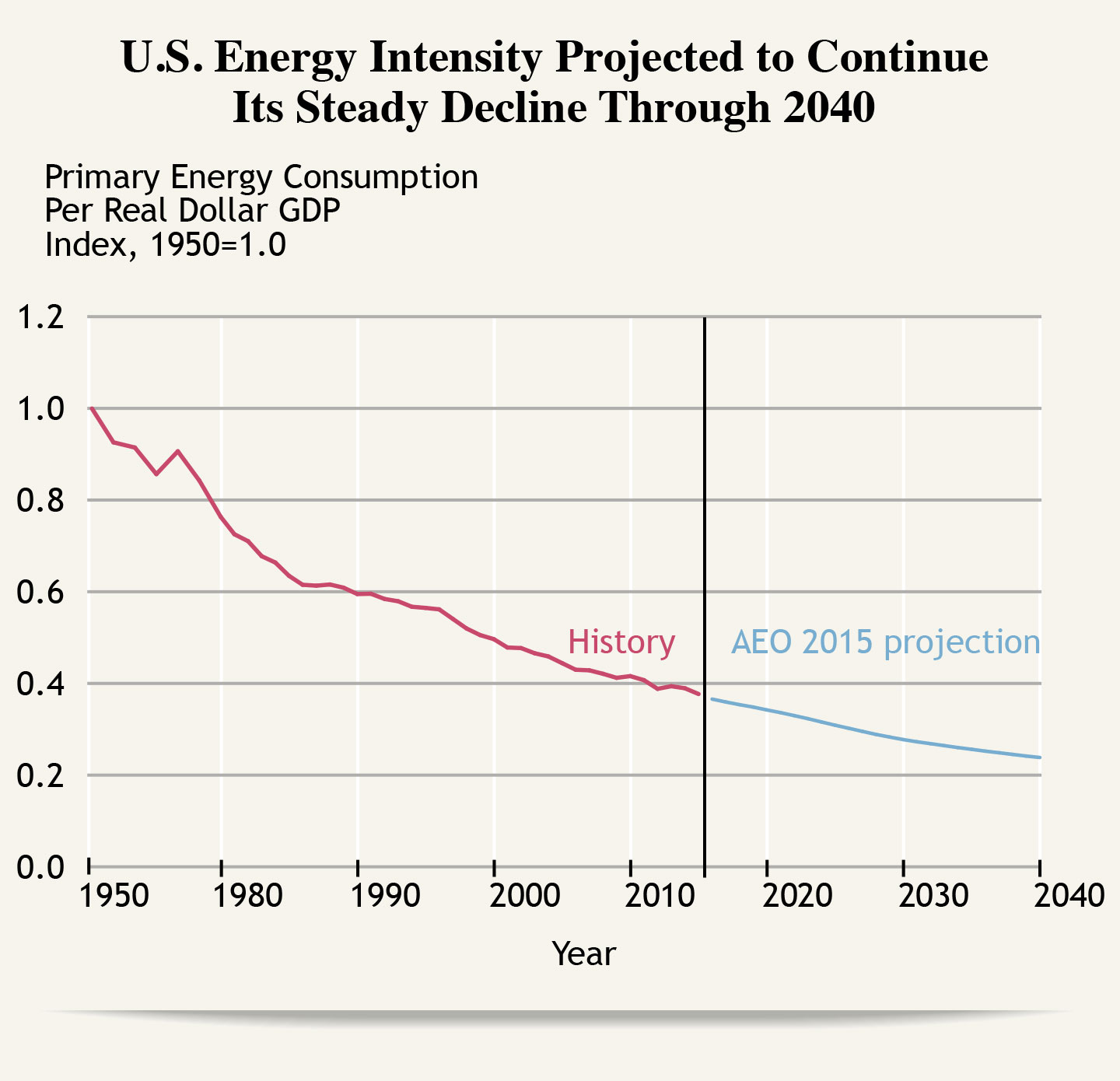Getting More for Less
Getting More for Less
Given the anticipated growth in every U.S. economic sector and the growing demand for nearly all energy sources, it’s natural to wonder how that growth can possibly be sustained. After all, America, with only 4.4% of the planet’s population, currently consumes 17% of the world’s total energy. And other countries are poised to experience increases in energy use as they become more industrialized and improve their standard of living. Can the United States actually meet its growing needs?
The answers are reassuring. Conservative and optimistic assessments from the National Research Council found that yearly energy efficiency savings across the U.S. economy are projected to be 30.5 to 35.8 quads by 2030.
The prognosis is encouraging because a very important factor is working in our nation’s favor. In recent years, the demand for energy has not been growing as rapidly as the economy, resulting in a significant drop in what is called energy intensity. From 1950 to 1970, primary energy consumption per dollar of gross domestic product (GDP) dropped about 9%. From 1970 to 2015, it dropped another 53% compared to 1950. Were it not for these developments, the U.S. energy bill would be higher by hundreds of billions of dollars per year.
One factor is the continuing reduction in energy intensity across many sectors of the economy. For example, in 1980, nearly 81 million U.S. households consumed a total of 9.3 quads. Thirty years later, the number of households had grown to more than 117 million (a 45% increase) and average square footage had also increased—but consumption rose only about 10%, to 10.2 quads.
Investments in energy efficiency and structural shifts in the economy away from energy-intensive industry and toward service and information-based jobs have both contributed to the phenomenon. During the 20 years from 1992 to 2012, the U.S. economy’s service sector grew (in constant-dollar terms) nearly 12 times as fast as the industrial sector. At the same time, both research and government regulation led to huge increases in efficiency, accompanied by engineering improvements in scores of systems, from automobile engines to building insulation to electric power-generating facilities.
The demand for energy has not been growing as rapidly as the economy, resulting in a significant drop in what is called energy intensity.
As a result, during the period 1995–2015, U.S. energy use per dollar of GDP decreased on average by 2% per year. Projections for the future are notably encouraging. The U.S. Energy Information Administration estimates that, in term of constant dollars, energy use per dollar of GDP will drop another 36% from 2015 to 2040, assuming further adoption of policies that promote energy efficiency.
Moreover, per-capita energy consumption is also projected to decline, continuing a trend that began around 2007. Although the U.S. population is expected to increase about 18% by 2040, total energy use is projected to rise only 11%, and energy use per capita to decrease by 6%.
Future progress will depend, as it does now, on independent technological breakthroughs, directed research, government mandates and incentives, economic benefits, and consumer education.
Related topics
Source Material
- Assessment of Advanced Solid State Lighting (2013)
- Overview and Summary of America’s Energy Future: Technology and Transformation (2010)
- Effect of U.S. Tax Policy on Greenhouse Gas Emissions (2013)
- Energy-Efficiency Standards and Green Building Certification Systems Used by the Department of Defense for Military Construction and Major Renovations (2013)
- Real Prospects for Energy Efficiency in the United States (2010)

